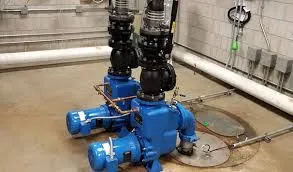Turkmen
- Afrikaans
- Albanian
- Amharic
- Arabic
- Armenian
- Azerbaijani
- Basque
- Belarusian
- Bengali
- Bosnian
- Bulgarian
- Catalan
- Cebuano
- Corsican
- Croatian
- Czech
- Danish
- Dutch
- English
- Esperanto
- Estonian
- Finnish
- French
- Frisian
- Galician
- Georgian
- German
- Greek
- Gujarati
- Haitian Creole
- hausa
- hawaiian
- Hebrew
- Hindi
- Miao
- Hungarian
- Icelandic
- igbo
- Indonesian
- irish
- Italian
- Japanese
- Javanese
- Kannada
- kazakh
- Khmer
- Rwandese
- Korean
- Kurdish
- Kyrgyz
- Lao
- Latin
- Latvian
- Lithuanian
- Luxembourgish
- Macedonian
- Malgashi
- Malay
- Malayalam
- Maltese
- Maori
- Marathi
- Mongolian
- Myanmar
- Nepali
- Norwegian
- Norwegian
- Occitan
- Pashto
- Persian
- Polish
- Portuguese
- Punjabi
- Romanian
- Russian
- Samoan
- Scottish Gaelic
- Serbian
- Sesotho
- Shona
- Sindhi
- Sinhala
- Slovak
- Slovenian
- Somali
- Spanish
- Sundanese
- Swahili
- Swedish
- Tagalog
- Tajik
- Tamil
- Tatar
- Telugu
- Thai
- Turkish
- Turkmen
- Ukrainian
- Urdu
- Uighur
- Uzbek
- Vietnamese
- Welsh
- Bantu
- Yiddish
- Yoruba
- Zulu
Telephone: +86 13120555503
Email: frank@cypump.com
Aug . 30, 2024 04:38 Back to list
Affordable Slurry Pump Cost - High-Quality Solutions for Your Needs
Understanding the Cost of Slurry Pumps
Slurry pumps are essential in various industries, particularly in mining, construction, and wastewater management, where the movement of viscous and abrasive fluids is crucial. The cost of slurry pumps can vary significantly based on several factors, including their design, materials, capabilities, and the specific applications for which they are intended. In this article, we will explore these factors to provide a clearer understanding of slurry pump costs.
Types of Slurry Pumps
Slurry pumps are typically categorized into two main types centrifugal pumps and positive displacement pumps. Centrifugal slurry pumps are the most common, using rotational energy to move the slurry. These pumps are generally more cost-effective and are widely used in applications that involve transporting slurries with lower solid concentrations. On the other hand, positive displacement pumps are suited for high-viscosity slurries and can handle thicker materials and higher solid concentrations. However, they are typically more expensive due to their complex mechanics and design.
Material Composition
The materials used in the construction of slurry pumps play a significant role in determining their cost. Slurry pumps are subjected to abrasive and corrosive environments, so they are often made from high-quality, durable materials such as high-chrome alloys, rubber linings, or reinforced plastics. The choice of material not only influences the upfront cost of the pump but also its lifespan and maintenance requirements. Pumps constructed with specialized materials may incur higher initial costs but can result in lower long-term operational costs by reducing the need for frequent replacements.
slurry pump cost

Size and Capacity
The size and capacity of a slurry pump are also critical factors that affect its cost. Larger pumps designed to handle higher flow rates and larger solid particles are generally more expensive than their smaller counterparts. When selecting a slurry pump, it is essential to consider the specific requirements of the application, including the volume of slurry to be handled, the size and type of solids, and the pumping distance. A tailored approach can prevent overspending on a pump that exceeds the needs of the application.
Installation and Maintenance
Beyond the initial purchase price, costs associated with the installation and maintenance of slurry pumps must also be considered. Installation may require specialized labor and equipment, particularly for larger or more complex systems. Regular maintenance, which is vital for ensuring optimal performance and extending the lifespan of the pump, can also add to the overall cost. Investing in high-quality pumps may lead to lower maintenance costs over time, making it a crucial consideration for budget-conscious operations.
Conclusion
In summary, the cost of slurry pumps is influenced by several factors, including the type, material composition, size, and installation needs. While initial costs can be high, understanding these factors can help decision-makers choose the right pump for their applications. Balancing upfront expenses with long-term durability and efficiency will ultimately lead to better investment outcomes and enhanced operational productivity in slurry handling processes.
-
Top Sewage Pump Companies Durable Industrial Solutions for Efficiency
NewsJun.09,2025
-
Heavy Duty Slurry Pumps - OEM High Performance & Bulk Wholesale
NewsJun.09,2025
-
Metso Vertical Slurry Pumps High-Efficiency & Durable Mining Solutions
NewsJun.09,2025
-
Slurry Pump Impeller Design - High Efficiency & Wear-Resistant Solutions
NewsJun.08,2025
-
Durable Slurry Pump Rubber Throat Bush OEM Wear-Resistant Parts
NewsJun.08,2025
-
Top Submersible Pump Supplier Durable & Efficient Solutions
NewsJun.08,2025










